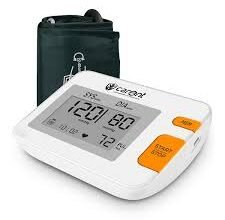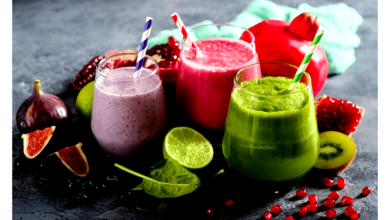The Science Behind the Cold Plunge Trend: Is It Really Beneficial?
Cold plunge benefits explored Does ice water therapy boost recovery, immunity & mental health? Science-backed risks & rewards revealed.

The cold plunge trend has surged in popularity among athletes, biohackers, and wellness enthusiasts, but does this icy practice truly deliver on its promised benefits? From professional athletes using ice baths for recovery to everyday people seeking mental clarity, cold water immersion is being hailed as a powerful tool for enhancing physical and mental performance. But beyond the hype, scientific research reveals both compelling advantages and important cautions about this chilling wellness ritual.
As more people explore natural ways to boost health and resilience, understanding the real effects of cold plunges becomes crucial. This article dives deep into the physiology behind cold exposure, examining its potential benefits for recovery, mood, immunity, and metabolism—while also addressing the risks and best practices for those considering taking the plunge. Whether you’re a curious beginner or a seasoned cold therapy practitioner, knowing the science behind the trend can help you make informed decisions about incorporating it into your wellness routine.
The Science Behind the Cold Plunge Trend
The Physiology of Cold Exposure
When your body is submerged in cold water, it undergoes a series of dramatic physiological responses. The sudden drop in temperature triggers the “cold shock response,” which includes rapid breathing, increased heart rate, and vasoconstriction (narrowing of blood vessels). These reactions are part of the body’s survival mechanism, redirecting blood flow to vital organs to maintain core temperature.
Over time, repeated cold exposure may lead to adaptations such as improved circulation, enhanced brown fat activation (which burns calories to generate heat), and reduced inflammation. Studies suggest that cold water immersion can lower muscle soreness after intense exercise by decreasing metabolic activity and slowing nerve conduction, which may explain its popularity among athletes.
Potential Benefits of Cold Plunges
Reduced Inflammation and Muscle Recovery
One of the most cited benefits of cold plunges is their ability to reduce inflammation and speed up muscle recovery. Athletes often use ice baths to alleviate delayed onset muscle soreness (DOMS), as cold exposure limits swelling and tissue breakdown. A study published in the Journal of Physiology found that cold water immersion after exercise significantly reduced muscle damage markers compared to passive recovery.
Enhanced Mental Resilience and Mood
Cold plunges are known to activate the sympathetic nervous system, leading to a surge in adrenaline and dopamine. This “fight-or-flight” response, when controlled, can train the body to handle stress more effectively. Wim Hof, a prominent advocate of cold therapy, claims that regular exposure builds mental toughness and reduces anxiety. Scientific studies support this, showing that cold showers can alleviate symptoms of depression by stimulating mood-regulating neurotransmitters.
Improved Immune Function
Some research suggests that cold exposure may strengthen the immune system. A Dutch study found that participants who took daily cold showers had a 29% reduction in sick days compared to those who didn’t. The theory is that cold stress activates immune cells, priming the body to fight infections more efficiently.
Weight Management and Metabolism Boost
Cold plunges may also play a role in weight management by activating brown adipose tissue (BAT), a type of fat that burns calories to generate heat. A study in the New England Journal of Medicine revealed that cold exposure increased BAT activity, suggesting a potential metabolic benefit. However, the long-term impact on weight loss remains debated.
Risks and Considerations
While cold plunges offer numerous potential benefits, they are not without risks—especially when practiced improperly or by individuals with certain health conditions. Understanding these dangers is crucial for safe and effective cold exposure. Below, we explore the key risks in detail, along with precautions to minimize harm.
Cardiovascular Stress and Heart Risks
One of the most significant dangers of cold plunging is its immediate impact on the cardiovascular system. When the body is suddenly submerged in cold water, blood vessels constrict rapidly, causing a sharp rise in blood pressure and heart rate. This “cold shock” response can be particularly hazardous for individuals with pre-existing heart conditions, including hypertension, arrhythmias, or a history of heart attacks. In extreme cases, the sudden strain on the heart could trigger cardiac events.
Hypothermia and Overexposure
Prolonged exposure to extremely cold water can lead to hypothermia, a dangerous drop in core body temperature. Symptoms include intense shivering, confusion, slurred speech, and loss of coordination. Those with low body fat (which provides insulation) or poor circulation are at higher risk, as are individuals plunging in near-freezing temperatures without proper monitoring.
Reduced Muscle Growth and Recovery Interference
While cold plunges are popular among athletes for reducing soreness, they may also hinder long-term muscle growth. Intense cold suppresses inflammation, which, while beneficial for pain relief, can interfere with the natural muscle repair process. Studies suggest that frequent ice baths after resistance training may blunt strength and hypertrophy gains by slowing protein synthesis and reducing the activation of muscle-building pathways.
Nerve Damage and Frostbite Risk
Exposing the skin to freezing temperatures for too long can cause nerve damage or frostbite, particularly in extremities like fingers, toes, and ears. Individuals with conditions like diabetes or Raynaud’s syndrome (which impairs circulation) are especially vulnerable. Early warning signs include tingling, numbness, and a whitish or bluish skin discoloration. To mitigate this risk, never exceed 10 minutes in icy water, and consider wearing neoprene socks or gloves if plunging in extreme cold.
Breathing Difficulties and Drowning Risk
The initial gasp reflex triggered by cold water can lead to hyperventilation, making it difficult to control breathing especially for beginners. This reaction increases the risk of accidental water inhalation, which can be dangerous in deep plunge pools or natural bodies of water. Individuals with respiratory conditions (such as asthma) or anxiety disorders may find the experience overwhelming. Practicing controlled breathing techniques, like the Wim Hof Method, can help manage the shock response.
Exacerbation of Certain Medical Conditions
Cold exposure may worsen symptoms for people with autoimmune disorders, chronic fatigue, or adrenal insufficiency, as the stress response can further strain an already compromised system. Those with open wounds, skin infections, or recent surgeries should also avoid cold plunges until fully healed, as extreme temperatures can slow healing and increase infection risks.
Overuse and Diminished Benefits
While occasional cold plunges can enhance recovery and resilience, excessive use may lead to diminishing returns. Chronic exposure to extreme cold can overstimulate the stress response, potentially leading to adrenal fatigue or a weakened immune system over time. To maintain benefits without overtaxing the body, limit sessions to 2-4 times per week and vary exposure times based on individual tolerance.
How to Safely Incorporate Cold Plunges
If you’re interested in trying cold plunges, start gradually. Begin with 30-60 seconds in cold showers before progressing to full immersion. Always monitor your body’s response and avoid icy water if you have heart issues or poor circulation. Pairing cold therapy with breathwork (like the Wim Hof Method) can help manage the initial shock.
Read More: How Artficial Intelligence is Revolutionizing Healthcare: The Future of Medicine
Conclusion
The cold plunge trend has demonstrated compelling scientific backing for its potential benefits, from enhanced recovery and reduced inflammation to improved mental resilience and immune function. As research continues to evolve, it’s clear that controlled cold exposure can be a powerful tool when used strategically. However, the practice is not without risks, particularly for individuals with certain health conditions or those who push beyond safe limits. The key lies in personalization—understanding your body’s responses and adapting cold therapy to align with your specific health goals and limitations.
Ultimately, while the cold plunge trend offers exciting possibilities for wellness optimization, it shouldn’t be approached as a one-size-fits-all solution. Like any biohacking modality, its effectiveness depends on proper implementation, gradual progression, and mindful awareness of potential dangers. As more studies emerge, we may gain even deeper insights into how to harness cold exposure most effectively. For now, those interested in exploring cold plunges should start slowly, prioritize safety, and consider consulting a healthcare professional—especially if they have pre-existing medical concerns. When practiced wisely, cold water immersion can be a valuable addition to a holistic health regimen.
FAQs
How long should a cold plunge last?
Beginners should start with 30-60 seconds and gradually increase to 2-5 minutes as tolerance builds.
Can cold plunges help with anxiety?
Yes, cold exposure triggers the release of mood-boosting neurotransmitters, which may reduce anxiety over time.
Are cold plunges safe for everyone?
No, people with heart conditions, hypertension, or Raynaud’s disease should consult a doctor before trying cold plunges.
Do cold showers offer the same benefits?
Cold showers provide similar but milder effects compared to full-body immersion in icy water.
How often should I do cold plunges?
2-3 times per week is a common recommendation, but frequency depends on individual goals and tolerance.











